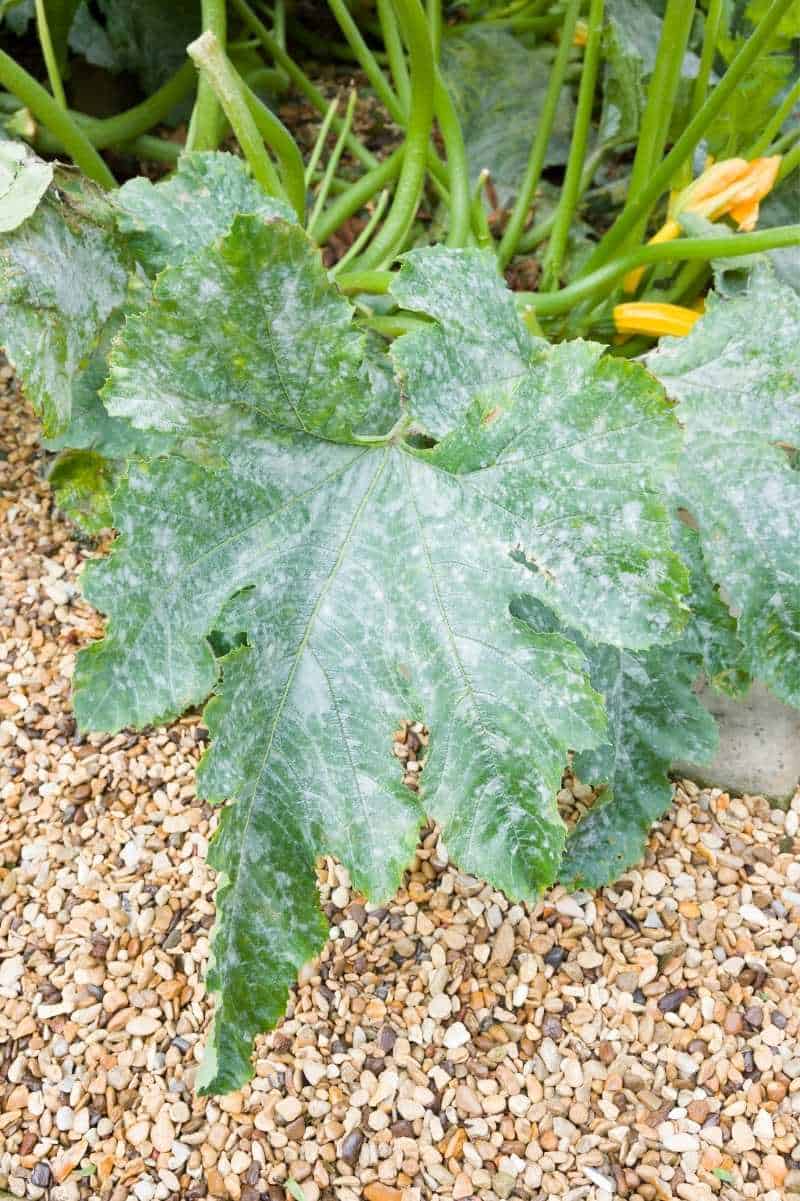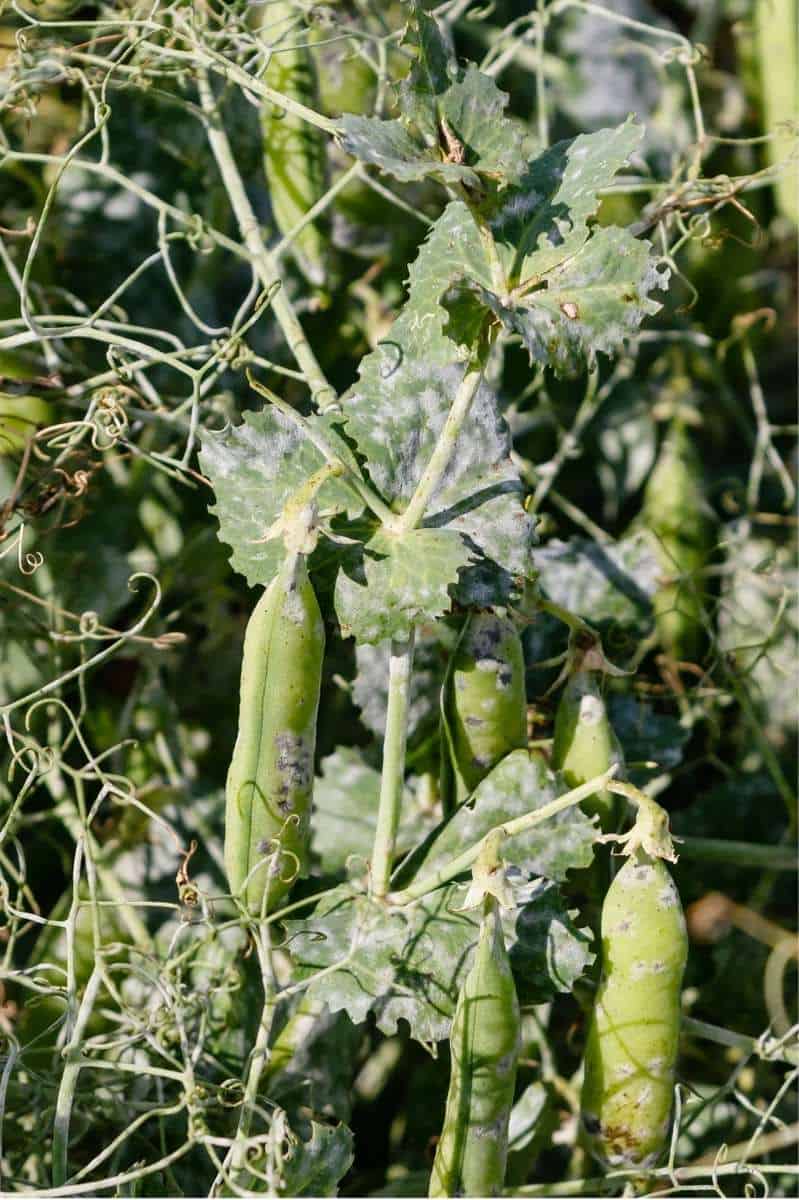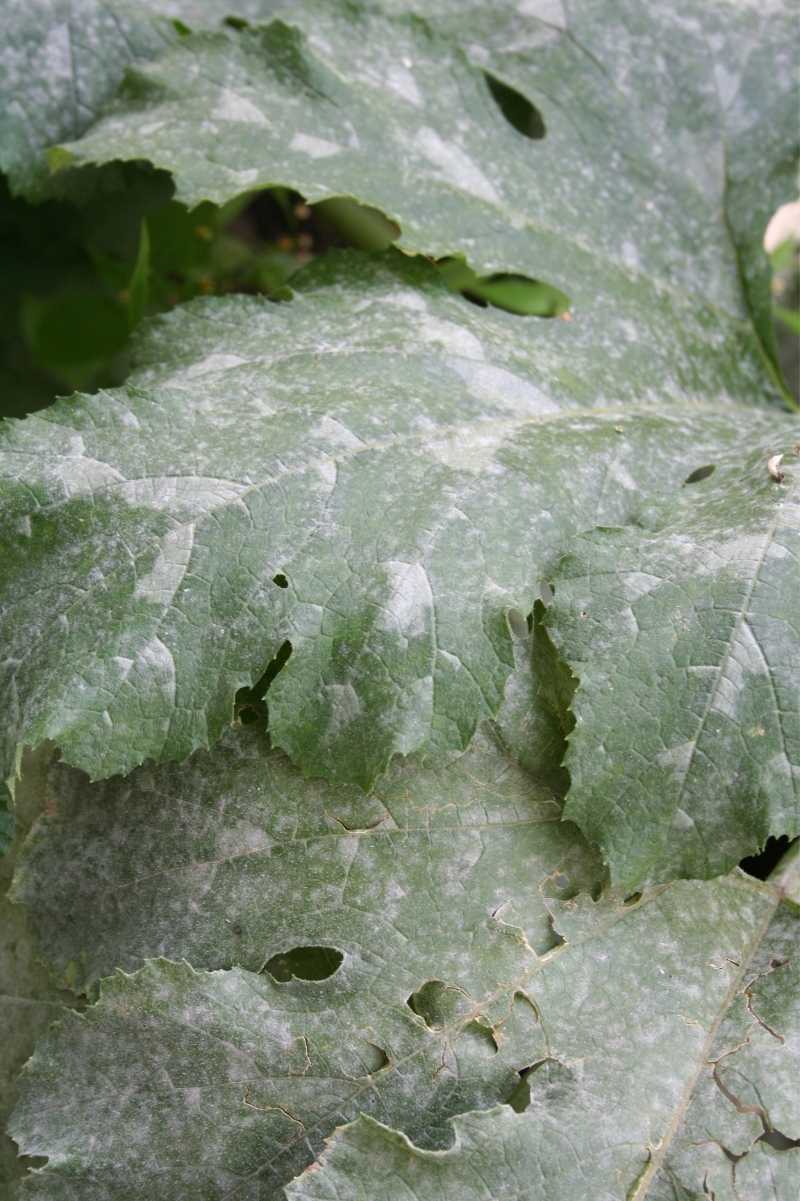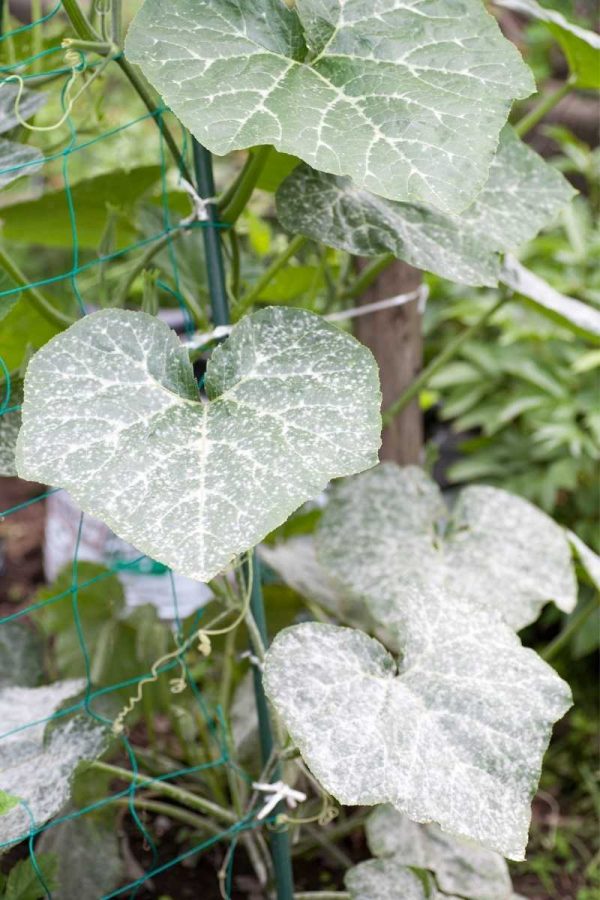Powdery mildew is a common fungal disease you’ll see in many home gardens—especially in regions that tend to be hot and humid. While powdery mildew may look unattractive, this slow-moving disease is rarely an emergency in the garden. So if you found powdery mildew in your garden, take a deep breath and read on—we’ll tell you exactly what to do (and what not to do).

Table of Contents
What is powdery mildew?
Powdery mildew is a fungal disease that can show on both the tops and undersides of leaves. It appears like grey or white powder, almost like flour or talcum powder was dumped on the leaves. While it looks bad, it is slow-moving, and powdery mildew rarely kills annual vegetable plants before they are done producing.
Growfully Protip
Some plants have variation to their leaves that can look like powdery mildew but it is just the normal growth of the plant—check your seed packet to see if that’s the case before treating. Zucchini and summer squash often naturally have leaves that look like they have powdery mildew, but it’s just the variegation.
What causes powdery mildew on plants?
The problem with trying to prevent powdery mildew is that it comes from a source that’s outside of your control: the wind. The spores drift in on the wind and settle on plants. Powdery mildew (like all fungal issues) spreads more rapidly when the weather is hot and humid—and especially in plants with limited air circulation.
Growfully Protip
It is also possible for powdery mildew spores to survive the winter. If you have powdery mildew in your garden, remove all infected plants at the end of the season and destroy them (don’t compost them!). Clean up any plant debris or weeds nearby that may harbor dormant spores.

What plants are susceptible to powdery mildew?
There is a wide range of plants that can be affected by powdery mildew:
- Cucurbits such as cucumbers, zucchini, squash, melons, and pumpkins
- Flowers including roses, zinnias, and bee balm
- Nightshades such as tomatoes, peppers, and eggplant
- Legumes including beans and peas
In the Growfully gardens, we’ve most commonly seen powdery mildew on cucurbits and zinnias, but know that it can happen on other crops as well.
What happens as powdery mildew progresses?
Eventually, infected leaves may die and fall off the plant, or they can become distorted. Powdery mildew does occasionally spread to cucumber or melon fruits themselves, but in general, it remains contained to the foliage and stems. Plants that have more advanced cases of powdery mildew will eventually slow their production of fruit (or produce low quality or small fruit) because the plant is weakened.


Is powdery mildew dangerous?
Veggies and fruit that are harvested from plants with powdery mildew are perfectly safe to eat—just follow your normal washing routine before consuming your goodies.
Can it spread to other plants?
Unfortunately, yes. Spores of the fungus can spread to other plants via the wind. To keep it from spreading to other plants, remove any infected plant parts and destroy them. Sterilize the shears or snips you use with rubbing alcohol to destroy any spores on your tools.

How can I prevent powdery mildew?
The best powdery mildew prevention happens before you even plant your vegetables. Here are the steps you can take:
- Clean up the garden. Powdery mildew spores can overwinter on garden debris and infected plants. At the end of the season, remove and destroy all infected plants, as well as leaves, weeds, or other plant debris in the garden. Do not add infected plant parts to your compost, as the fungus can survive there.
- Select resistant varieties. If powdery mildew is a concern or a recurring problem in your garden, select resistant varieties of cucurbits and other plants.
- Space the plants out. When it comes time to plant the garden, make sure that plants have appropriate spacing so that there is good air circulation. This will help slow the spread of the fungus.
- Improve air circulation. More air circulation=less disease spread. Use stakes or tomato cages to corral gangly plants, and prune any excess growth to increase the space between plants.
- Limit nitrogen-rich fertilizers in late summer. Fresh growth is the most susceptible to infection, and excess fertilizer can boost this growth and put your plants more at risk.

Should I treat powdery mildew?
Here in the hot and humid zone 6 Growfully Gardens, powdery mildew is just a fact of life—we will have plants with powdery mildew by the time mid-summer hits. In our experience, it’s a rarity that a case of powdery mildew becomes advanced enough to impact the production of a crop before the end of the growing season when we’ll be removing it anyway. The truth is, we rarely treat powdery mildew in the Growfully Gardens. It’s just not worth the return on time investment for doing the regular treatment.
That being said, some folks really dislike the appearance of the powdery leaves and treat the plants solely for this reason. If that’s you, or if you’d like to help slow down a powdery mildew infestation (it’s really hard to stop it completely), read on!
How do you get rid of powdery mildew on plants naturally?
While some gardeners will apply commercial fungicides for a powdery mildew case, we rarely think it is worth the time investment or risks to pollinators and other wildlife (even organic fungicides). Again, we generally just let small cases of powdery mildew live in our garden—it’s just a fact of life when you garden in a hot and humid climate! But when we do go to treat, we generally stick with a baking soda spray to prevent and treat powdery mildew.

Baking Soda Treatment for Powdery Mildew (and other fungal issues)
- 2 tablespoons horticultural oil (optional, but highly recommended for effectiveness)
- 1 heaping tablespoon baking soda
- 1 tablespoon liquid dish soap
- 1 gallon water
Spray this baking soda solution on plants that are showing symptoms of powdery mildew. You can also use this as a preventative treatment—just make sure to spray all sides of all leaves and stems once per week. This mixture can stay mixed in a sprayer or spray bottle, just make sure to shake well before using.
Growfully Protip
We’ve had good luck using this baking soda spray to prevent many kinds of fungal infections. Using it regularly on our tomato plants in the Growfully Gardens has greatly helped reduce the Anthracnose infections that are common on tomato plants in our area.








I think the usual advice about Powdery mildew is wrong. We are told that it’s worse when plants are moist. Here in the SF Bay Area I never am bothered by PM on my squash and beans in May through mid-July when it’s cooler and damp. But from late July through September, when it’s hot and dry, the PM explodes. Baking soda barely affects it, but it may slow it if regularly applied. Copper or Neem oil have similar poor results. If a company came up with something that stopped PM, they’d make a fortune.
Cassie, your blog has helped me become a better vegetable gardener-something my husband always did- in countless ways, thank you so much! Wondering if I can use plain mineral oil in place of the horticultural oil in this recipe. I have it and all the other ingredients here at home.
mineral oil is a processed petroleum product. I would not recommend it for the garden. I’m glad you’re feeling more confident in the garden!